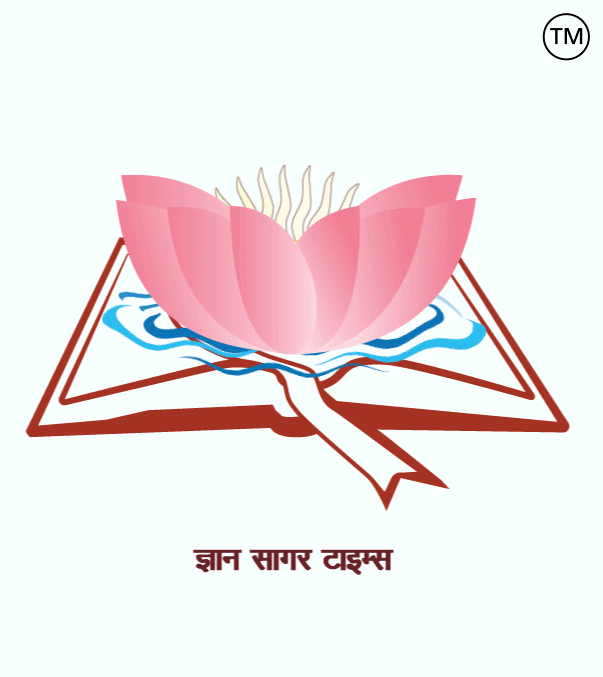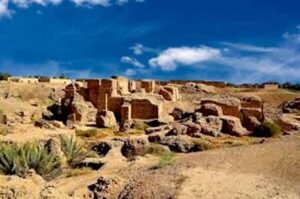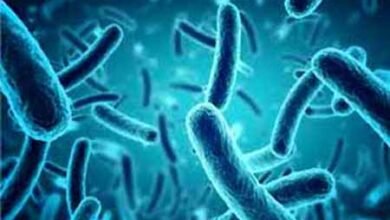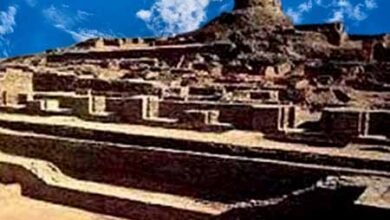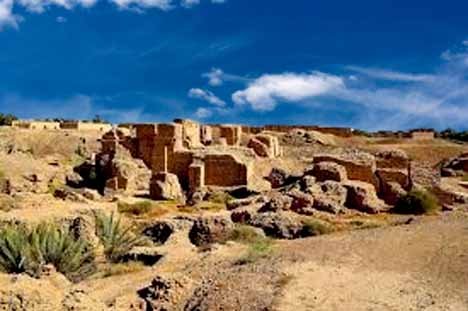
Related to history-194.
|
1. Who propounded the ‘principle of passive protest’? = Arvind Ghosh. 2. Who said the words ‘Politics is the soul of freedom’? = Arvind Ghosh. 3. What was ‘Kamagatamaru’? = Ship departed on a trip to Canada. 4. Who inaugurated the Ganpati festival in Maharashtra? = Bal Gangadhar Tilak. 5. Which act introduced the federal structure in India? = Act of 1935. 6. Who wrote the book ‘India for Indians’? = Chittaranjan Das. 7. Who founded the ‘Indian Association’? = Surendra Nath Banerjee. 8. At what time was the dog domesticated? = In the Megalithic period. 9. When did Humans start using fire from which period? = Palaeolithic period. 10. Which was the first metal used by humans? = Copper. 11. In which period was the wheel invented? = occurred during the Chalcolithic Age, also known as the Neolithic Age. 12. Who first started the research on the Stone Age civilisation in India? = Robert Bruce Foot. 13. Which is considered to be the oldest civilization in the world? = Mesopotamian Civilization. 14. When was the “Unity Proposal for peace” accepted in the General Assembly? = 3 November 1950. 15. Who is called the “gift of indigo”? = Egypt. 16. What was the king of Egypt called? = Pharaoh. 17. Who has the largest pyramid in ancient Egypt, and who built it? = It was built during the reign of Pharaoh Khufu, who was the ruler of the 4th dynasty of Egypt. 18. What was the biggest achievement of the residents of Egypt? = Construction of pyramids, temples and monuments. 19. What calculations were made by the Almanack of China? = Created by combining solar and lunar calculations. 20. In which country did the art of kite flying first develop? = China. 21. The Mesopotamia civilization was developed along which rivers? = It was born on the banks of the Tigris and Euphrates rivers. 22. What is the meaning of Mesopotamia? = Land between rivers. 23. Where was the Mesopotamia civilization most developed? = It was born in the region between the Tigris and Euphrates rivers. 24. Who built the Sumerian civilization? = The Sumerians. 25. Which metal was more used by people in the Sandhava-civilization? = Bronze Metal. 26. Who was the first to make a law code in the world? = Hammurabi. 27. Where was the glass first used? = Mesopotamia. 28. The Dashmik system of counting is the product of which civilization? = India. 29. The period in which the Rig Veda was composed is known as which period? = Vedic period or Rigvedic period. 30. In which period Vedas other than Rigveda were composed, what is it called? = Vedic period. 31. In India, the Aryans came and laid the foundation of which civilization? = Uttar Vedic period. 32. Where did Aryans first settle in India? = In Sapta Sindhu Pradesh. 33. What was the major form of wealth in the Rigveda? = Gau dhan. 34. What was the basis of the Varna system in the Rigvedic period? = Karma (business). 35. Which inscription describes the military achievements of Samudragupta? = Allahabad Pillar inscription.
================ ================== ================== इतिहास से संबंधित-194. 1. ‘निष्क्रिय विरोध का सिद्धांत’ किसने प्रतिपादित किया था? = अरविंद घोष. 2. ‘राजनीति स्वतंत्रता की प्राण वायु है’ यह शब्द किसने कहे थे? = अरविंद घोष. 3. ‘कामागाटामारु’ क्या था? = कनाडा की यात्रा पर निकला जहाज. 4. महाराष्ट्र में गणपति उत्सव का शुभारम्भ किसने किया था? = बाल गंगाधर तिलक. 5. किस अधिनियम में भारत में पहली बार संघीय संरचना प्रस्तुत की गई? = 1935 का अधिनियम. 6. ‘इंडिया फॉर इंडियन’ नामक पुस्तक किसने लिखी थी? = चितरंजन दास 7. ‘इंडियन एसोसिएशन’ की स्थापना किसने की थी? = सुरेंद्र नाथ बनर्जी. 8. कुत्ता को किस काल में पालतू पशु बनाया गया था? = मध्य पाषाण काल. 9. मानव ने आग का प्रयोग किस काल से शुरू की थी? = पुरापाषाण काल. 10. मानव द्वारा प्रयोग की गयी पहली धातु थी? = ताँबा. 11. पहिये का आविष्कार किस काल में हुआ? = ताम्र-पाषाण युग में हुआ था, जिसे नव पाषाण युग भी कहा जाता है. 12. भारत में पाषाण कालीन सभ्यता का अनुसन्धान सर्वप्रथम किसने प्रारम्भ की थी? = रॉबर्ट ब्रूस फुट. 13. दुनिया की सबसे पुरानी सभ्यता कौन सी मानी जाती है? = मेसोपोटामिया सभ्यता 14. महासभा में “शांति के लिए एकता प्रस्ताव” कब स्वीकार किया गया था? = 3 नवंबर 1950. 15. किसे “नील का उपहार” कहा जाता है? = मिस्र. 16. मिस्र के राजा को क्या कहा जाता था? = फिरौन. 17. प्राचीन मिस्र में सबसे बड़ा पिरामिड किसका है तथा इसे किसने बनवाया था? = फिरौन खुफ़ू ने अपने शासनकाल के दौरान बनवाया था, जो मिस्र के चौथे राजवंश के शासक थे. 18. मिस्र निवासी की सबसे बड़ी उपलब्धि क्या थी? = पिरामिडों, मंदिरों और स्मारकों का निर्माण. 19. चीन का पंचांग किन-किन गणनाओं को मिलाकर बनाया गया था? = सौर और चंद्र गणनाओं को मिलाकर बनाया गया. 20. पतंग उड़ाने की कला किस देश में सर्वप्रथम विकसित हुई? = चीन. 21. मेसोपोटामिया की सभ्यता का विकास किस नदियों के किनारे हुआ था? = दजला (टिगरिस) और फरात (यूफ्रेट्स) नदियों के किनारे हुआ था. 22. मेसोपोटामिया का क्या अर्थ? = नदियों के बीच की भूमि. 23. मेसोपोटामिया सभ्यता का विकास सबसे ज्यादा कहाँ हुआ था? = दजला और फरात (Tigris and Euphrates) नदियों के बीच के क्षेत्र में हुआ था. 24. सुमेरी सभ्यता का निर्माण किसने किया था? = सुमेरियों. 25. सैंधव-सभ्यता में लोग किस धातु का अधिक प्रयोग करते थे? = कांस्य धातु. 26. विश्व में सर्वप्रथम विधि-संहिता बनाने वाला कौन था? = हम्मूरावी. 27. शीशे का प्रयोग सर्वप्रथम कहाँ हुआ था? = मेसोपोटामिया. 28. गिनती की दाशमिक प्रणाली किस सभ्यता की देन है? = भारत. 29. जिस काल में ऋग्वेद की रचना हुई, उसे किस काल के नाम से जाना जाता है? = वैदिक काल या ऋग्वैदिक काल. 30. किस काल में ऋग्वेद के अतिरिक्त अन्य वेदों की रचना हुई उसे क्या कहते हैं? = उत्तर वैदिक काल. 31. भारत में आर्यों ने आकर किस सभ्यता की नींव डाली थी? = वैदिक सभ्यता. 32. आर्य भारत में सबसे पहले कहाँ बसे थे? = सप्त सिन्धु प्रदेश. 33. ऋग्वेद में सम्पत्ति का प्रमुख रूप क्या था? = गौधन. 34. ऋग्वैदिक काल में वर्ण व्यवस्था का आधार क्या था? = कर्म (व्यवसाय). 35. समुद्रगुप्त की सैनिक उपलब्धियों का वर्णन किस अभिलेख में है? = प्रयाग प्रशस्ति.
|

